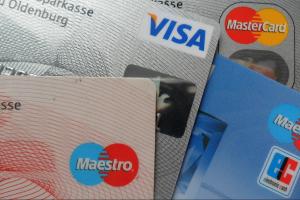Identity theft on the rise
RACHEL TRUONG
ASST. BUSINESS EDITOR
Your identity is your prized possession. It is what defines you and what allows you to do just about anything, from getting a job to applying for a credit card. However, what many do not realize, is just how easy and costly it is to get their identity stolen.
The Bureau of Justice Statistics reported that 16.6 million people in the United States became victims of identity theft in 2012. This resulted in a financial loss of $24.7 billion. The increasing emphasis in mobility and reliance on technology has caused experts to consider identity theft the fastest growing crime in America.
Students are therefore exposed to many methods that would allow an identity thief to steal information. The University of San Diego is home to a population of over 5,000 students, which means that about 350 students will end up victims of identity theft annually. In addition to visits to the bank and the use of ATMs on campus, students receive emails, open mail, and use the internet.
Emails asking for personal information, known as phishing emails, are often sources of identity theft, as well as questionable websites that ask for a person’s name, social security, or credit card information. The school itself holds a record for each student, which includes vital information, such as full names, birthdates, and social security numbers. If a wallet is left out or pickpocketed, a student’s credit card and identification card can easily be stolen.
The Travelers insurance company conducted a poll stating that the leading cause of identity theft is through stolen or misplaced items, such as a wallet or purse. The company reveals that car burglary and internet are the next two causes of identity theft.
USD junior Kristina Durough is close to someone who has become a victim of identity theft. She detailed the process of how it happened and the consequences.
“It happened to one of my parents,” Durough said. “The thing is, it wasn’t their fault. We’re a pretty careful family, always making sure that we keep our wallets on us, shredding anything with our personal information on it if we didn’t need it anymore, and not giving out any personal information online. Whatever happened, there were huge charges for jewelry and stuff suddenly appearing on my parents’ account. Eventually, we managed to figure out what card they were using and cancelled it.”
Durough added that the identity theft did not end simply at the cancelling of the offending credit card. She continued describing the months that followed the discovery of a stolen identity.
“They eventually ordered a new credit card and actually came to pick it up and sign for it,” Durough said. “We were probably out of the house at the time or something, because we never saw anyone out on our lawn signing for anything. It was creepy, knowing that they knew where we lived. Eventually, we got everything sorted out, but we never actually caught the thief.”
USD as a whole has also experienced identity theft in the form of a phishing email sent out to numerous USD students and alumni earlier this year. This email would ask for a student’s USD ID, which would then be used to access school records and possibly extort money.
In response to this email, USD’s Information Technology Services have taken steps to prevent further phishing emails and identity theft. In a set of frequently asked questions released on their website, ITS advised that identity theft can be prevented by making sure you never share private information with anyone and by being careful about throwing out anything with your address or any other identifying information on it. To quickly catch an identity thief, keep careful tabs on your financial statements and look out for charges that do not look like ones that you have made.
